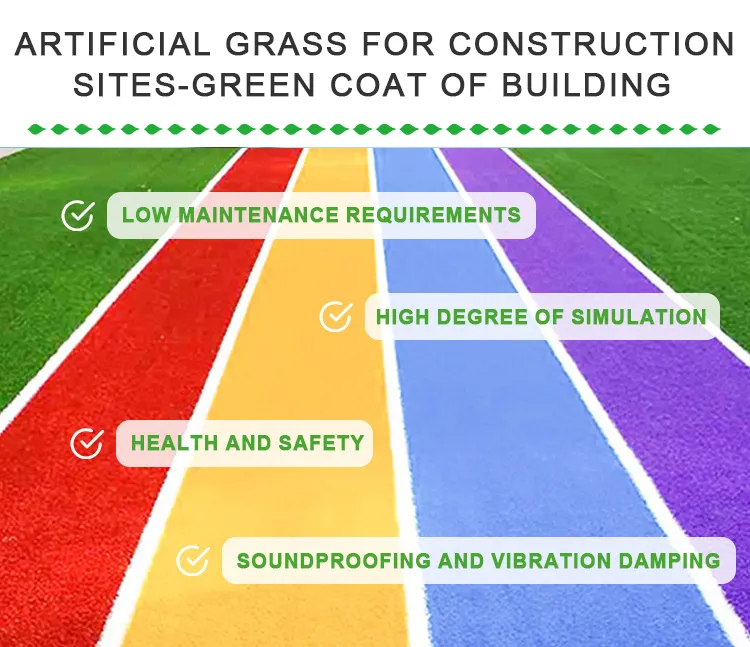
- Afrikaans
- Arabic
- Belarusian
- Bengali
- Czech
- Danish
- Dutch
- English
- Esperanto
- Estonian
- Finnish
- French
- German
- Greek
- Hindi
- Hungarian
- Icelandic
- Indonesian
- irish
- Italian
- Japanese
- kazakh
- Rwandese
- Korean
- Kyrgyz
- Lao
- Latin
- Latvian
- Malay
- Mongolian
- Myanmar
- Norwegian
- Persian
- Polish
- Portuguese
- Romanian
- Russian
- Serbian
- Spanish
- Swedish
- Tagalog
- Tajik
- Thai
- Turkish
- Turkmen
- Ukrainian
- Urdu
- Uighur
- Uzbek
- Vietnamese
backyard turf cost
Dec . 06, 2024 23:01 Back to list
The Cost of Backyard Turf A Comprehensive Guide
When it comes to enhancing your outdoor space, backyard turf has become an increasingly popular option for homeowners. Not only does it provide a lush, green aesthetic, but it also offers durability and low maintenance compared to natural grass. However, the question of cost is always at the forefront of anyone considering this investment. In this article, we'll explore the various factors that influence the cost of backyard turf, the different types available, and their long-term benefits.
Understanding the Types of Turf
Before diving into costs, it's essential to recognize the different types of turf available in the market. Generally, there are two main categories artificial turf and natural turf.
1. Artificial Turf This option is made from synthetic fibers designed to look and feel like natural grass. It is often used for sports fields, playgrounds, and residential lawns. The initial cost of artificial turf can be higher than natural grass, but the long-term savings in maintenance, water, and chemicals can make it a worthwhile investment.
2. Natural Turf This includes sod, seed, and hybrid options that rely on natural grass varieties. Natural turf may have lower upfront costs, but it typically requires ongoing expenses such as watering, fertilization, and mowing.
Factors Influencing Costs
1. Material Costs The type of turf you choose plays a significant role in the overall cost. Artificial turf can range from $5 to $20 per square foot, depending on the quality and brand. In contrast, natural sod generally costs between $0.50 to $2.00 per square foot, with seeds being even less expensive.
2. Installation Installation costs vary based on the complexity of the project. For artificial turf, hiring professionals can add $3 to $10 per square foot for installation due to the need for proper sub-base preparation. Natural sod installation typically ranges from $1 to $2 per square foot.
3. Size of the Area Naturally, the larger the area you intend to cover, the higher the total cost will be. When budgeting for turf, consider the square footage of your backyard and request estimates based on that size.
4. Site Preparation Before installing turf, soil conditioning and site preparation may be required, which can add to the overall cost. This includes removing existing grass, leveling the ground, and adding necessary materials like sand or gravel for drainage.
backyard turf cost

5. Maintenance Costs While artificial turf often boasts minimal upkeep, it isn’t entirely maintenance-free. Occasional cleaning, infill replacement, and repairs might be necessary. On the other hand, natural turf requires regular watering, mowing, and chemical treatments, which can accumulate significant costs over time.
Long-Term Benefits of Backyard Turf
Investing in high-quality turf can yield various long-term benefits that extend beyond initial costs
1. Sustainability Artificial turf can help conserve water, particularly in regions prone to drought. It eliminates the need for regular watering, thereby reducing your environmental footprint.
2. Lifespan High-quality artificial turf can last up to 15-20 years, whereas natural grass typically requires regular reseeding and upkeep to maintain its lush appearance.
3. Aesthetic Appeal Both artificial and natural turf can elevate the look of your backyard, making it a more enjoyable space for family gatherings, barbecues, and other outdoor activities.
4. Increased Property Value A well-maintained lawn can enhance the overall appearance of your property, potentially increasing its market value.
5. Safety Artificial turf is designed to be non-toxic and can be safer for children and pets, especially when compared to traditional grass treated with chemicals.
Conclusion
The cost of backyard turf can vary significantly based on several factors, including the type of turf, installation costs, and ongoing maintenance. While artificial turf may have a higher initial price tag, its longevity and low maintenance requirements can make it a savvy investment for homeowners. Conversely, natural turf offers a more traditional approach, though its upkeep can accumulate costs over time.
Ultimately, when considering your backyard turf options, it's important to analyze your budget, lifestyle, and long-term goals. By understanding the costs and benefits associated with each type of turf, you can make an informed decision that will enhance your outdoor living space for years to come.
-
The Benefits of Artificial Turf for Indoors
NewsJul.15,2025
-
How Artificial Grass Suppliers Ensure Quality Products
NewsJul.15,2025
-
Artificial Grass and Pets: A Space for Relaxation
NewsJul.08,2025
-
Balcony & Outdoor Decoration with Artificial Grass
NewsJul.08,2025
-
Best Indoor Artificial Grass for Home
NewsJul.07,2025
-
Best Pet Turf for Dogs: Safe & Durable Artificial Grass Options
NewsJul.07,2025
Products categories









